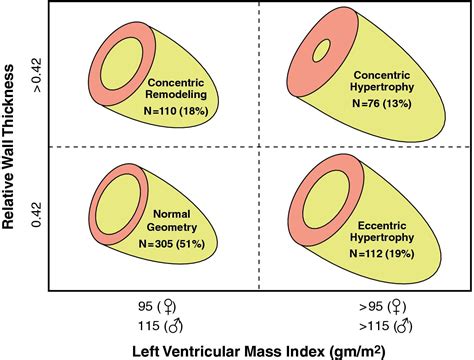aging decreases post-infarction lv dilation | Left Ventricular Post aging decreases post-infarction lv dilation Reduced cardiomyocyte renewal in aging may represent a therapeutic target in post-infarction LV remodeling in elderly patients. Aging of other cell types. Aging of the heart as an . Las Vegas Raiders. 8-9. 2nd in AFC West. Visit - ESPN (SG) for Las Vegas Raiders live scores, video highlights, and latest news. Find standings and the full 2023 season .
0 · The Aging Heart and Post
1 · Patterns of left ventricular remodeling post
2 · Left ventricular remodelling post
3 · Left Ventricular Remodeling in Heart Failure: Current Concepts in
4 · Left Ventricular Remodeling after Myocardial Infarction: From
5 · Left Ventricular Remodeling after Myoca
6 · Left Ventricular Remodeling After Myocardial Infarction
7 · Left Ventricular Remodeling After Myoca
8 · Left Ventricular Post
9 · Aging dysregulates D
10 · Age
HOURS (subject to change based on private events) LOBBY. Su-Th 12pm - 9pm. F-Sa 12pm - 11pm. ARENA. Su-Th 12pm - 9pm. F-Sa 12pm - 11pm. STREAMER ROOM. Su-Th 12pm - 9pm.

We review the cellular and molecular aspects of post-infarction remodeling in the aged heart, and relate them to the clinical problem of post-infarction remodeling in elderly patients. Myocardial Infarction (MI), Left Ventricular (LV) Remodeling, and Heart FailurePostinfarct ventricular remodeling represents a prevailing cause of heart failure (HF), and it occurs in almost 30% of patients with a previous anterior myocardial infarction (MI) and in only . Conclusions— Age is associated with a phenotype of LV remodeling marked by increased mass-to-volume ratio and accompanied by systolic as well as diastolic myocardial dysfunction that is not reflected by .
Reduced cardiomyocyte renewal in aging may represent a therapeutic target in post-infarction LV remodeling in elderly patients. Aging of other cell types. Aging of the heart as an . Postinfarction left ventricular dilatation is greater at 1 week than at 24 to 48 hours after Q-wave infarction. Intervention with captopril (cap, light arrows) prevents or reverses .The excess influx of fatty acid in aging decreased the expression of pro-resolving markers Arg-1 (2.7 fold; p<0.05) and Ym-1 (2.6 fold; p<0.05) in infarcted LV compared with young-SO group .
LV post-infarct remodeling impacted negatively on survival in the SAVE (Survival and Ventricular Enlargement) trial, in which 2,231 patients with an acute myocardial infarction and LV dysfunction were randomized to an ACE inhibitor .In rats with large MI, statin treatment attenuated LV dilatation and LV end-diastolic pressure and was associated with reduced myocardial expression of foetal genes and collagens. 121 These .
After adjustment for predictive baseline variables, LV dilation > 20% and 6-month LVEF < 50% were significantly associated with the risk of death and/or heart failure: hazard . Ventricular remodeling, first described in animal models of left ventricular (LV) stress and injury, occurs progressively in untreated patients after large myocardial infarction . We review the cellular and molecular aspects of post-infarction remodeling in the aged heart, and relate them to the clinical problem of post-infarction remodeling in elderly patients. Myocardial Infarction (MI), Left Ventricular (LV) Remodeling, and Heart Failure
The Aging Heart and Post
Postinfarct ventricular remodeling represents a prevailing cause of heart failure (HF), and it occurs in almost 30% of patients with a previous anterior myocardial infarction (MI) and in only approximately 17% of patients with non-anterior infarct [1]. Conclusions— Age is associated with a phenotype of LV remodeling marked by increased mass-to-volume ratio and accompanied by systolic as well as diastolic myocardial dysfunction that is not reflected by preserved ejection fraction. Reduced cardiomyocyte renewal in aging may represent a therapeutic target in post-infarction LV remodeling in elderly patients. Aging of other cell types. Aging of the heart as an organ is certainly not confined to the aging of cardiomyocytes alone. Postinfarction left ventricular dilatation is greater at 1 week than at 24 to 48 hours after Q-wave infarction. Intervention with captopril (cap, light arrows) prevents or reverses progressive remodeling compared with placebo (plac, dark arrows), with a greater benefit after earlier intervention (from 24 to 48 hours) than after 1 week.
The excess influx of fatty acid in aging decreased the expression of pro-resolving markers Arg-1 (2.7 fold; p<0.05) and Ym-1 (2.6 fold; p<0.05) in infarcted LV compared with young-SO group (Supplementary Figure 2A and B). Thus, excess intake of omega-6 fatty acids dysregulated the infarcted LV healing markers post-MI in aging. DISCUSSIONLV post-infarct remodeling impacted negatively on survival in the SAVE (Survival and Ventricular Enlargement) trial, in which 2,231 patients with an acute myocardial infarction and LV dysfunction were randomized to an ACE inhibitor or placebo .
In rats with large MI, statin treatment attenuated LV dilatation and LV end-diastolic pressure and was associated with reduced myocardial expression of foetal genes and collagens. 121 These effects may be related to enhanced NO formation in statin-treated animals, as NOS inhibition abolished the positive results. 122
After adjustment for predictive baseline variables, LV dilation > 20% and 6-month LVEF < 50% were significantly associated with the risk of death and/or heart failure: hazard ratio (HR) 2.12 (95% confidence interval (CI) 1.05–4.43; p = 0.04) and HR 2.68 (95% CI 1.20–6.00; p = 0.016) respectively.
Patterns of left ventricular remodeling post

versace white and gold vase
gold versace jaguar
⭐️MAP CODE 4850-9814-5109💙 Follow us on Twitter https://twitter.com/Gold_Studio_📩 contact pro [email protected]
aging decreases post-infarction lv dilation|Left Ventricular Post


























